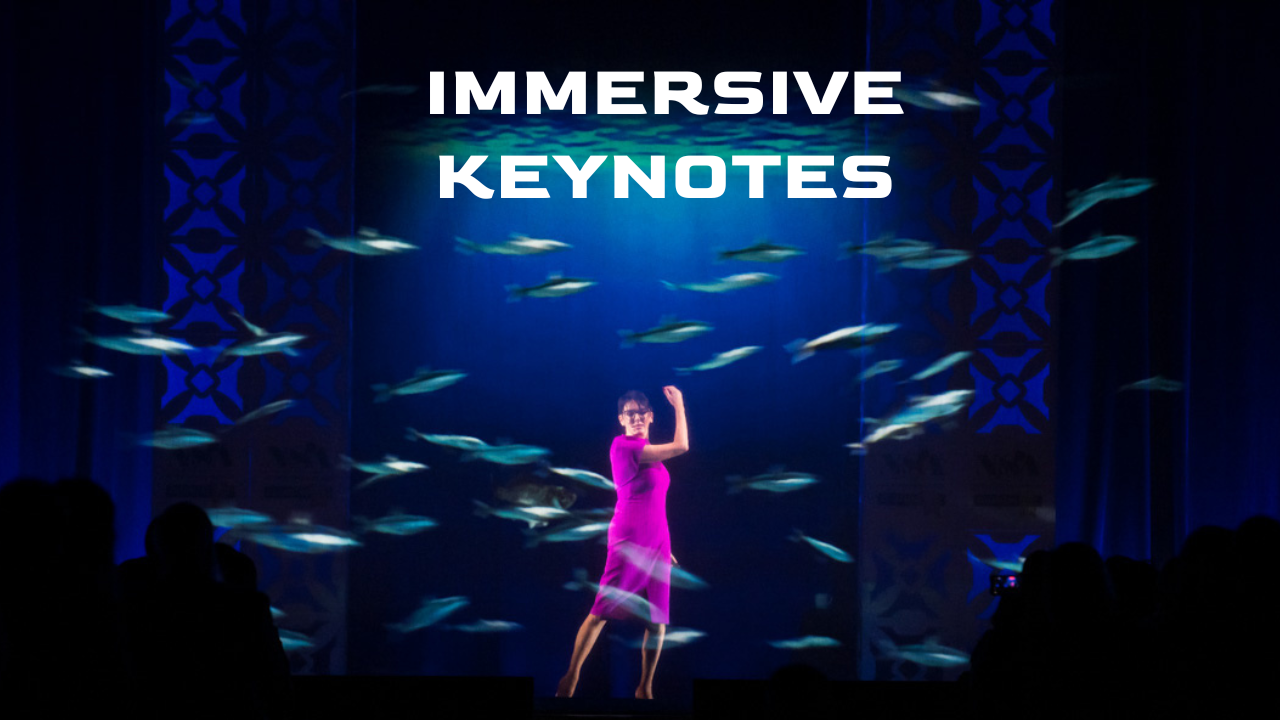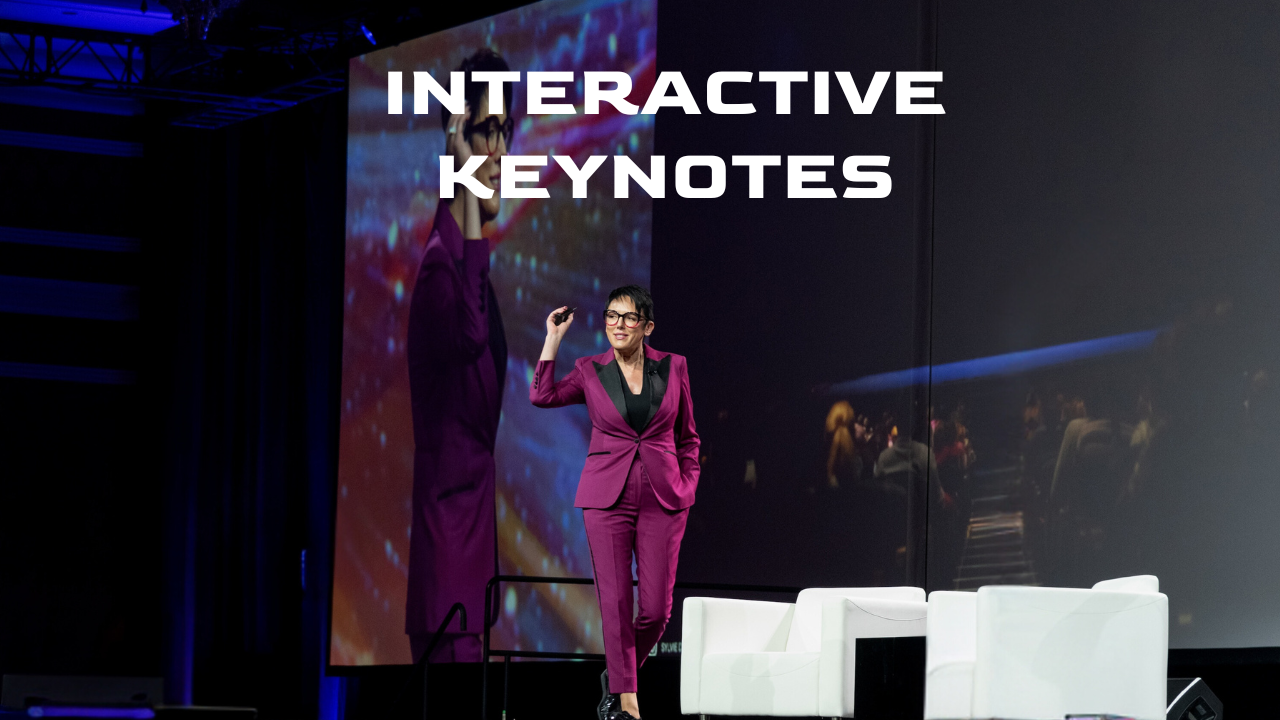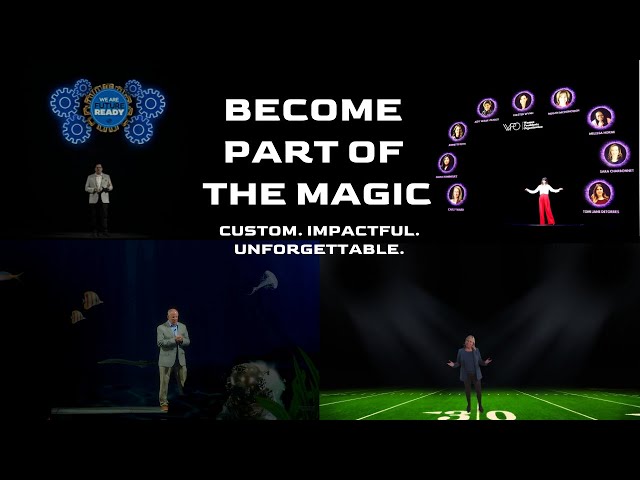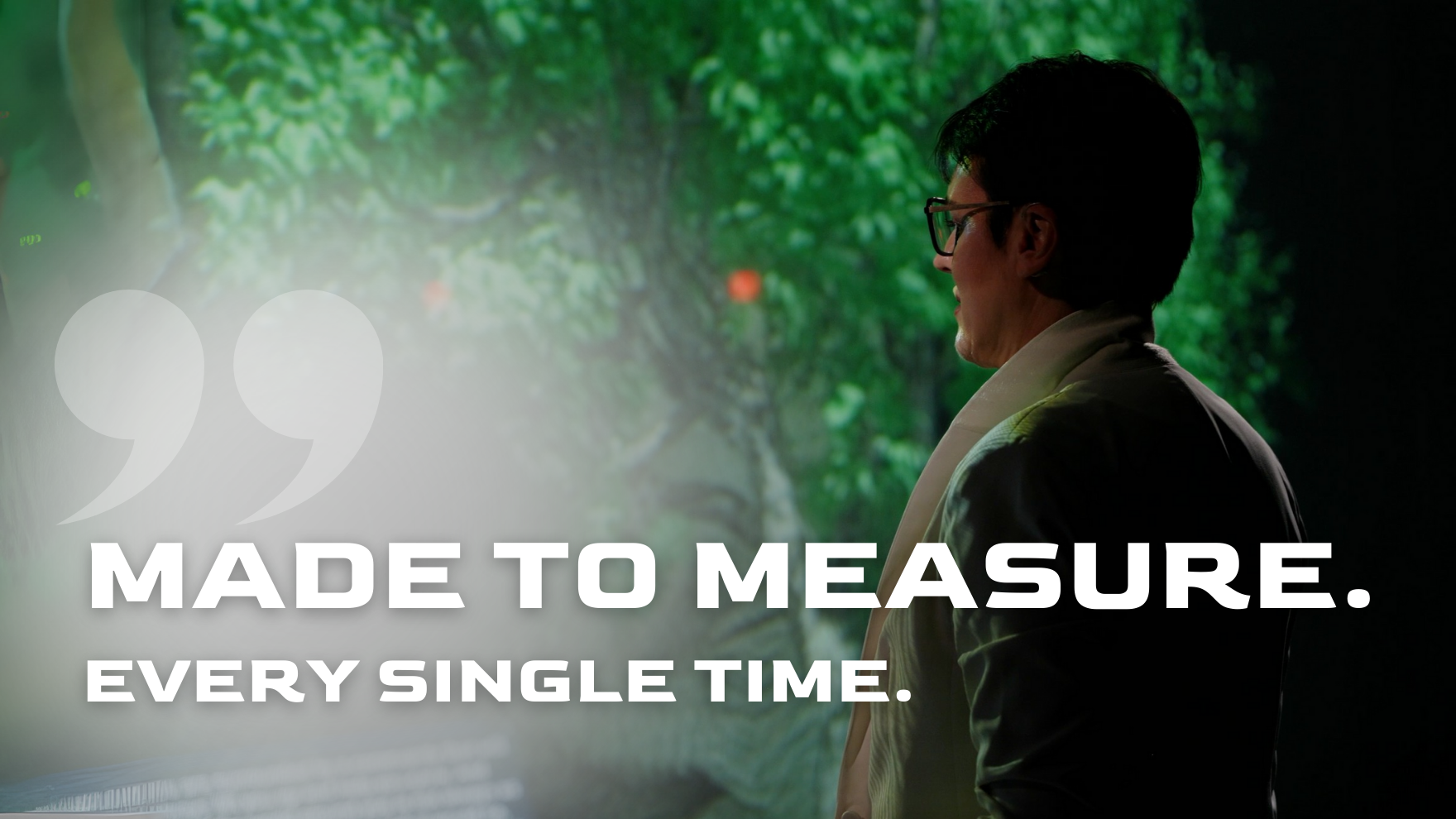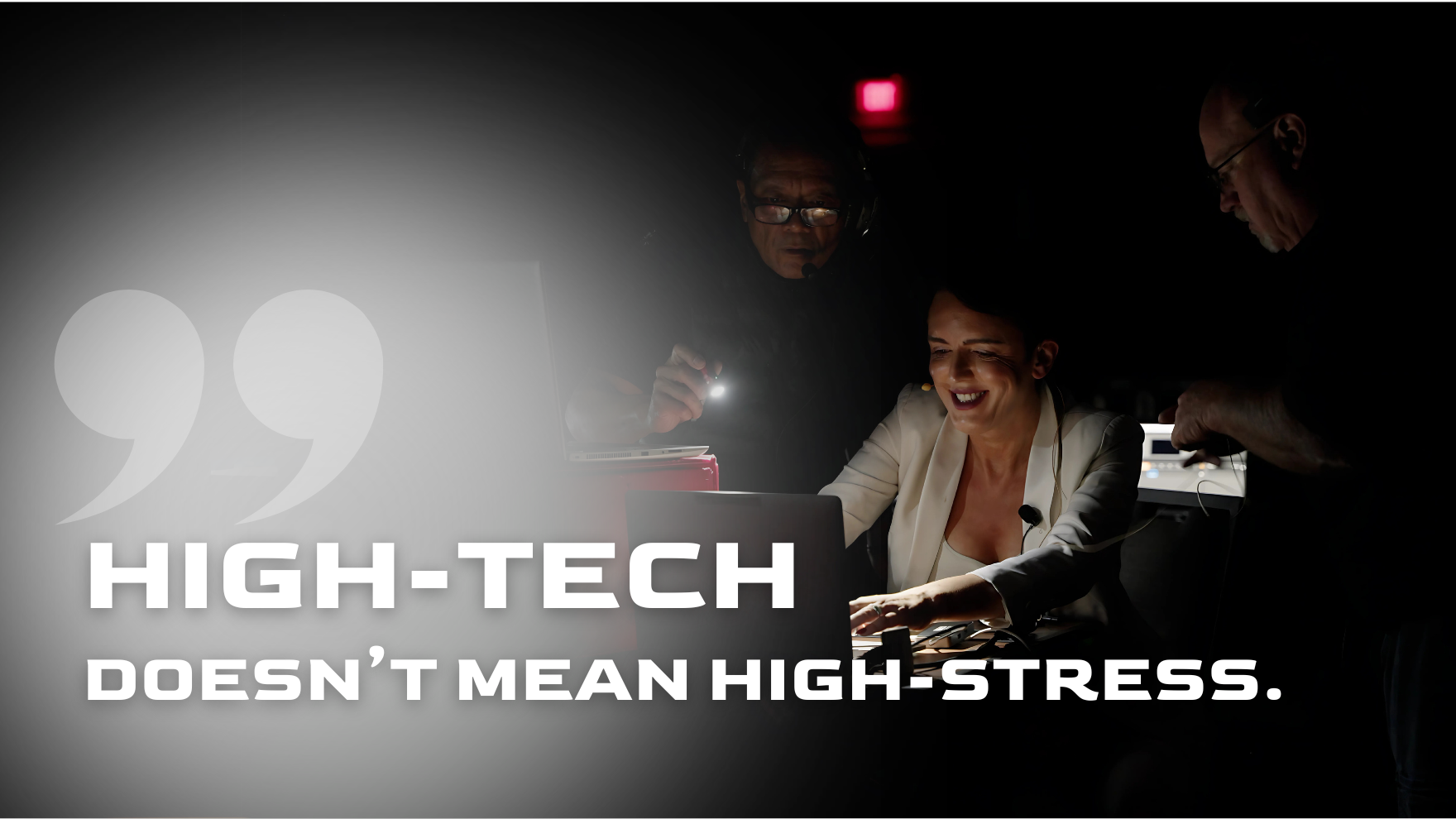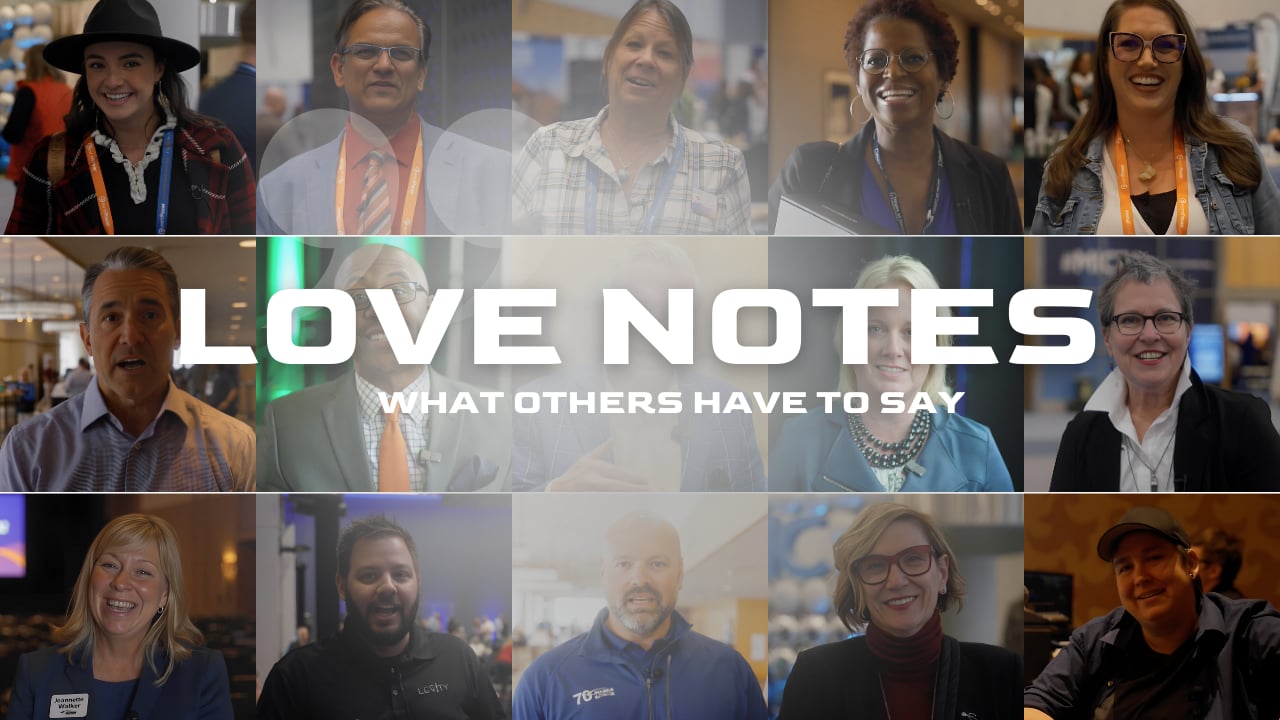The Gift of Customization: What Audiences Deserve and Speakers Must Deliver
Some professional speakers view customization as a burden: unpaid prep, late-night research, one more thing on an already packed to-do list. But the truth? Customization isn’t extra—it’s everything. It’s a doorway into the client’s world. It’s an open invitation to step inside the intricacies of an industry, the heartbeat of a culture, the emotional undercurrents of a company.
And that invitation isn’t just a kind gesture—it’s a responsibility. Professional speakers who customize with care don’t just upgrade their keynotes. They elevate the entire experience. They turn a speech into something that feels singular, intimate, and deeply relevant. Because when the audience knows it’s been made for them—they lean in.
Key Takeaways
- Customization is no longer optional for professional speakers—it’s the expectation.
- Audiences immediately sense when something was made just for them.
- Real customization isn’t cosmetic—it’s contextual.
- Great speakers convert insight into intimacy, not just content.
- Skipping customization can insult audience intelligence.
- In the age of AI and Google, how you deliver matters more than what.
- Customization is a privilege—and one of the few remaining differentiators in the speaking world.
From Extra Work to Extraordinary Access
Let’s be honest: it’s easy to treat customization like a checklist. Add the logo. Mention the city. Reference the CEO. Include the new product name. Done. But that’s not customization. That’s decoration.
Here’s what true professional speakers know: when a client opens the curtain and offers you a glimpse behind the scenes, they’re giving you something extraordinary. They’re offering you insight, access, and trust.
Every event we walk into brings with it a front-row seat into a unique world. One week, you’re with the leadership team of a healthcare system. The next, you’re at an innovation summit for engineers. Or a strategy offsite with a nonprofit fighting systemic inequity. This kind of access? It’s rare. And professional speakers who customize understand how sacred it is.
When we step into these rooms, we’re not there to deliver our story—we’re there to reflect theirs back to them, with clarity, care, and resonance. And that means making space for the nuances they may not even articulate directly: the silent pride in their work, the unresolved tensions between departments, the subtle hierarchy of language that signals inclusion or exclusion. Sometimes, the most powerful moment in a keynote isn’t the story we tell, but the one we affirm from within their own reality. By mirroring what they live—accurately and empathetically—we help the audience feel not just understood, but validated. And in doing so, we create a moment of shared reflection that elevates the keynote from performance to partnership.
Customization isn’t decoration. It’s a deep bow of respect.
At HDA’s leadership conference, I had the pleasure to step into a world most people never see—but every person relies on. Behind every vial, every delivery, every on-time shipment is a silent network of healthcare distributors making life-saving decisions at light speed. This keynote wasn’t just about leadership—it was about honoring precision, pressure, and purpose.
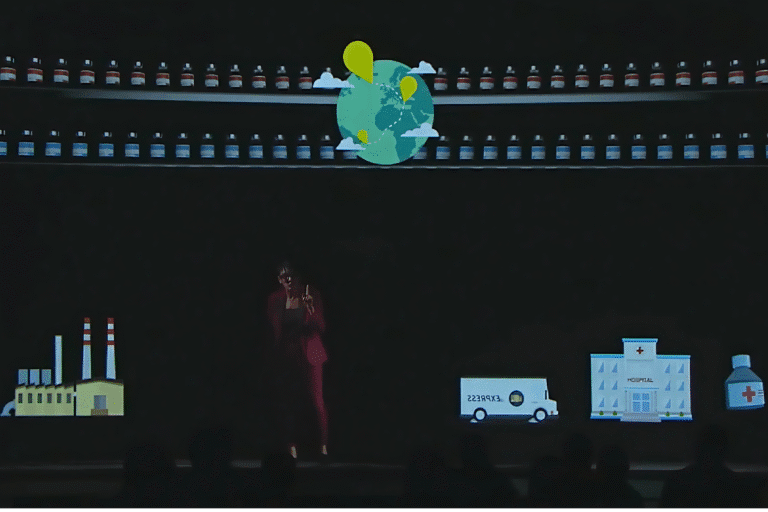

Customization isn’t about making your keynote better. It’s about making your audience matter.
Customization Isn’t Decoration. It’s Design.
Let’s clarify one thing: sticking a logo on your slides and name-dropping a department head is not customization. That’s theater. Audiences today are sharp. They can spot a recycled talk dressed up in local colors from a mile away. And when they do, it’s not just disappointing—it’s offensive. It tells them the speaker didn’t see them as unique, didn’t value the opportunity, and didn’t respect their time.
Delivering a keynote that could be given to the group next door—word for word—sends a clear message: this wasn’t crafted for you. And when that happens, the audience doesn’t just disengage—they disconnect. The impact of a talk like that? Instantly diminished.
What audiences crave is relevance. Language that sounds like theirs. A speaker who understands their pain points, their pride, their pressure points. And here’s where professional speakers who customize stand apart:
They listen—truly listen—to the client.
They learn the organization’s tone, values, tensions, and aspirations.
They speak with multiple stakeholders to build layered insight.
They infuse the keynote with metaphors, stories, and examples that feel native to the room.
They adjust tone, pace, delivery, and even body language to match the audience energy.
They reflect back what they’ve learned—not for applause, but to show they care.
They test assumptions to avoid clichés or misrepresentations that could disconnect the audience.
They tailor their opening moments to create immediate resonance with the room.
They design transitions that mirror the organization’s internal flow—from challenge to change, from tension to triumph.
They anticipate objections or resistance and proactively address them with empathy and relevance.
They incorporate the event’s larger arc so their keynote doesn’t feel isolated, but integrated.
When done right, it’s a shared moment that feels impossible to replicate anywhere else—a moment that lives beyond the keynote and lingers in conversations, decisions, and culture. For professional speakers, that’s the ultimate goal: not just delivering a great message, but creating an experience that feels rooted in one audience, in one moment, and nowhere else. It’s the difference between being remembered and being replayed. And it’s what separates the best professional speakers from a good presenter. Customization isn’t just the method—it’s the meaning. It tells every audience member, “You matter enough for this to be different.”
A keynote isn’t a script—it’s a mirror.
At MIC Colorado, I had the opportunity to reflect back what meeting professionals already live and breathe: that People, Purpose, Passion, and Potential aren’t just a conference theme. They’re the DNA of this industry. This wasn’t a message dropped in—it was drawn out, shaped by the conversations, challenges, and values shared with me behind the scenes.
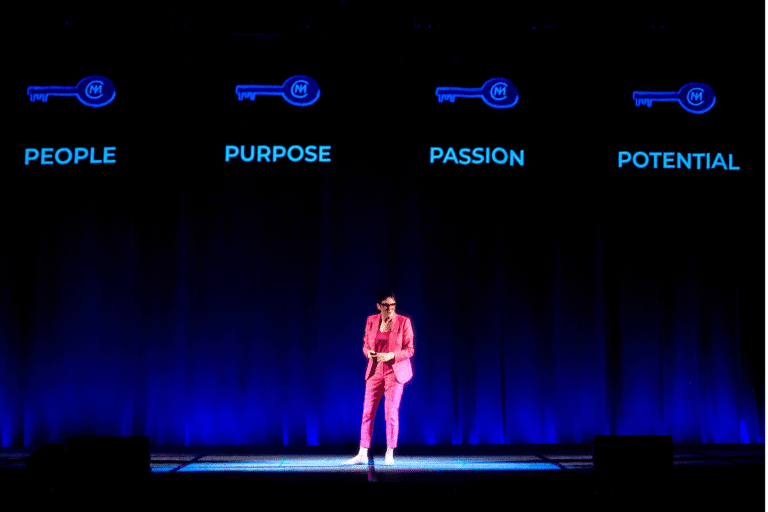

Audiences don’t want a better version of your last speech. They want the only version of this one.
The Risk of Faking It
You can’t fake customization. The audience knows. They always know. When professional speakers walk on stage with a barely edited version of last week’s keynote, audiences disengage. They scroll. They daydream. They check their badge and move on.
And the client? They feel dismissed. They gave you access to their world—and you brought something generic. That’s not just a miss—it’s a trust issue.
Customization that’s shallow doesn’t just fall flat. It erodes your credibility. Because when someone senses you didn’t try, they don’t just tune out—they write you off.
No, neither clients nor audiences expect you to become an insider or a subject matter expert in their industry overnight. And customization isn’t about impersonating them or trying to pass as one of their own. It’s about demonstrating thoughtful effort, not artificial expertise. When pushed too far, it can come off inauthentic—or worse, patronizing. It’s not about proving you belong in their world. It’s about showing you made the effort to understand it.
Because without that? You’re not a thought leader. You’re a content repackager. And we all know who does that faster: the internet.
Customization means speaking their language—before they even say a word.
At Right at Home’s annual conference, boldness wasn’t a buzzword—it was a call to action. For the franchise leaders in this room, it meant pushing past hesitation, owning their local impact, and making courageous choices in care and business alike. My job wasn’t to inspire boldness—it was to reflect the boldness already in the room.
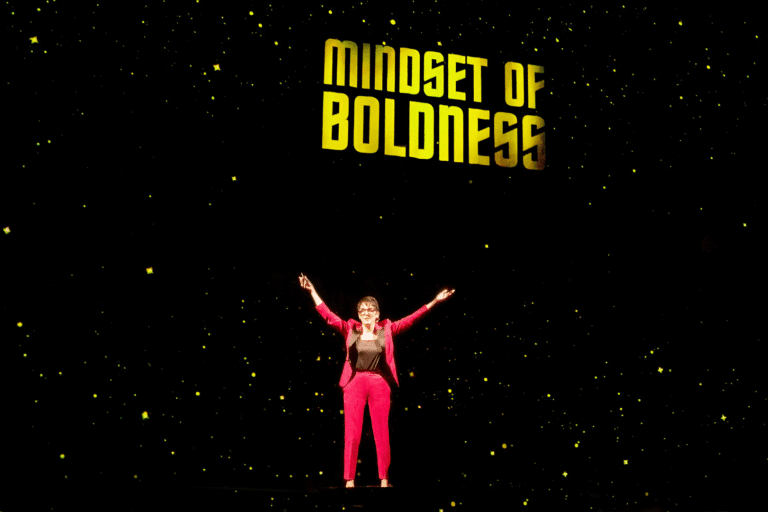

A templated talk is more than lazy. It’s loud disrespect—packaged with a smile.
Content Is Everywhere. Context Is Rare.
There was a time when having great content made you a standout speaker. Today? Knowledge is everywhere. YouTube, podcasts, LinkedIn, ChatGPT. Audiences can access brilliant frameworks and powerful ideas on demand.
So what makes professional speakers still relevant? Context.
Context is the one thing you can’t download. It’s the lived understanding of how to deliver the right message to the right people at the right time. It’s the nuance, the pause, the adaptation in the moment. It’s being fully in the room—with the room.
Professional speakers who customize bring more than slides or soundbites. They bring pattern recognition—connecting disparate threads across industries, audiences, and experiences to highlight what truly matters. They bring emotional intelligence, reading the tone of the room and shifting course as needed, even mid-sentence. They bring calibrated storytelling—sharing a story not because it’s on their script, but because it fits this moment, this audience, this purpose. They bring credibility not through perfection, but through presence.
That’s what professional speakers who customize deliver. They don’t bring information. They bring transformation shaped precisely for the moment—and precisely for you.
Real customization means meeting people where they are—literally.
At MHEDA’s annual convention, I didn’t just speak about their world—I stepped into it. Surrounded by forklifts, shelves, and systems, we explored leadership and perception in the very place their daily decisions unfold. Because for this audience, relevance isn’t abstract—it’s operational, tangible, and built into every pallet moved and promise kept.


You’re not hired to know the most—you’re hired to know what matters right now, in this room.
Questions Smart Planners Should Ask Professional Speakers
Yes, many professional speakers promise customization. But will they really deliver? You won’t know until they step on stage. So how do you separate those who rehearse your language from those who truly understand your world? One of the smartest ways is to ask the right questions in advance. If you’re booking a keynote, and you’re serious about impact—not just stage presence—ask your speaker these:
How do you research a client’s industry and culture?
Who on our team would you ideally speak with beforehand?
Can you share an example of a customized keynote you’ve delivered?
How do you ensure your message feels fresh and specific to each group?
What’s your process for tailoring tone, pace, or delivery?
What happens when you uncover something unexpected during prep?
How do you know when your content is resonating—or not?
Can you adapt your stories or frameworks to different audience levels?
How do you connect your background to ours, even if our industries differ?
What would you do differently for us compared to the last audience you served?
If our company’s website didn’t exist, how would you learn about us?
What’s the most surprising insight you’ve ever uncovered during pre-event research?
How do you tailor your first 60 seconds to make the audience feel instantly understood?
When you review a company’s internal materials, what are you listening or looking for?
How do you prep differently for a keynote at a private retreat versus a large conference?
How would you adjust if you realized—mid-keynote—that the tone of the room shifted?
These aren’t just filters. They’re insight tests. They help planners identify professional speakers who customize not just for applause—but for impact. Because when a speaker answers these questions with specificity, curiosity, and genuine thought, they reveal more than a process—they reveal a mindset. They show whether customization is a philosophy or a performance. Whether they’re committed to creating an experience or just delivering a talk. For planners who want a keynote that truly lands, the goal isn’t just to find a speaker who can adapt—but one who chooses to, every single time. That distinction is what turns good events into unforgettable ones.
Few audiences are more discerning than the ones who design the experience themselves.
At Informa Connect’s, the room was filled with event professionals who know exactly what it takes to make a keynote land—and what it looks like when it doesn’t. Customizing this experience for them meant holding myself to the same standard they uphold every day: precision, relevance, and impact by design.
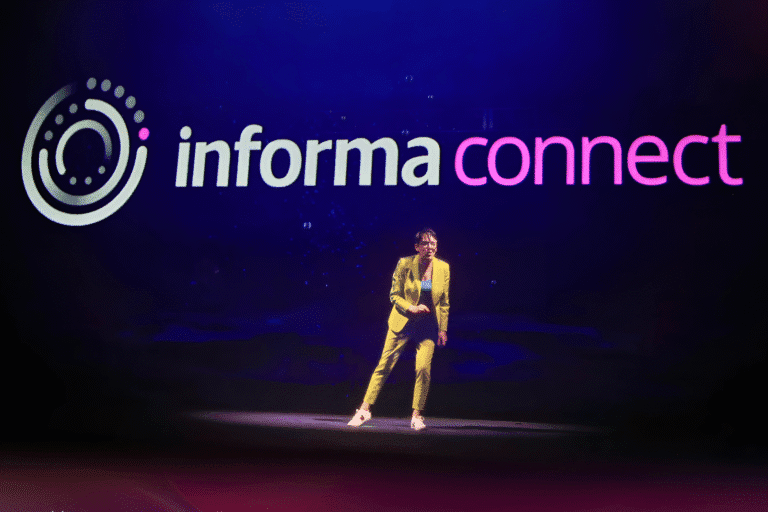

Audiences don’t need another brilliant idea. They need a reason to believe it applies to them.
As a professional speaker, your job is not to say something. It's to say something that matters.
As a professional speaker, you are granted access to extraordinary stories and missions. And when you are given that trust? It’s your job to show up prepared. To show up curious. To customize with heart.
You aren’t hired to deliver a talk. You are hired to say something that matters. Something that resonates. Something that feels made for this room, this moment, these people. Because it was!
Customization isn’t a bonus feature. It’s the benchmark. The proof that you prepared, that you listened, that this isn’t just another line on your calendar.
When done well, it builds trust. It elevates the speaker-client relationship. It makes the audience feel respected and understood. And most of all? That it was not just a good keynote, but that it was applicable. That it showed up in conversations, meetings, and leadership moments the very next day.
That’s the goal. Not applause. It’s applicability.
Sometimes, customization doesn’t end with the keynote—it invites others in.
At Boys & Girls Clubs of America, CFO Sam Unglo didn’t just follow my message—he stepped into it. Literally. Using the same 3D immersive environment, he brought his own bold vision to life. Because when a message is crafted for the moment, it often becomes one worth joining.
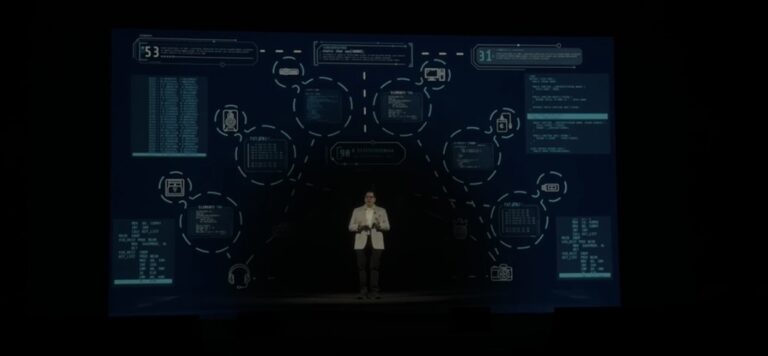

Great customization doesn’t say “Look at me.” It whispers, “I see you.”
ABOUT THE AUTHOR
Sylvie di Giusto stands among the top professional speakers trusted by today’s most discerning audiences. Known for pioneering the use of 3D immersive experiences in keynotes, she delivers more than just a presentation—she delivers a fully customized, unforgettable moment that drives clarity, connection, and meaningful change.
With a background in corporate leadership and a career spanning global industries, Sylvie brings insight, emotional intelligence, and strategy to every stage she steps onto. She is one of those rare professional speakers who customize not only their message, but their entire approach—ensuring that what she delivers reflects the goals, tone, and culture of the room she’s in.
Sylvie is proudly represented by cmi, one of the world’s leading speaker management agencies. If you’re looking for a keynote experience tailored for your audience, your moment, and your message—connect here to bring it to life.
Some glass ceilings aren’t above us—they’re within us.
At the Women Presidents Organization, I wasn’t there to tell this extraordinary group how to lead. I was there to hold up a mirror—to reflect the internal narratives, invisible limits, and unconscious patterns that even the most successful women carry. Because sometimes, the boldest act of leadership is choosing to get out of your own way.


